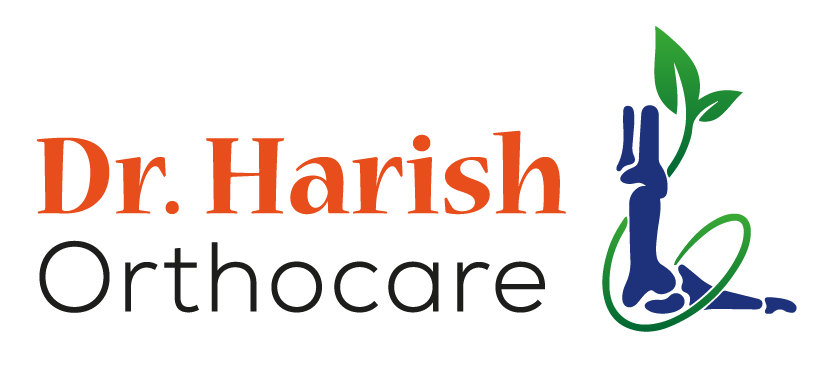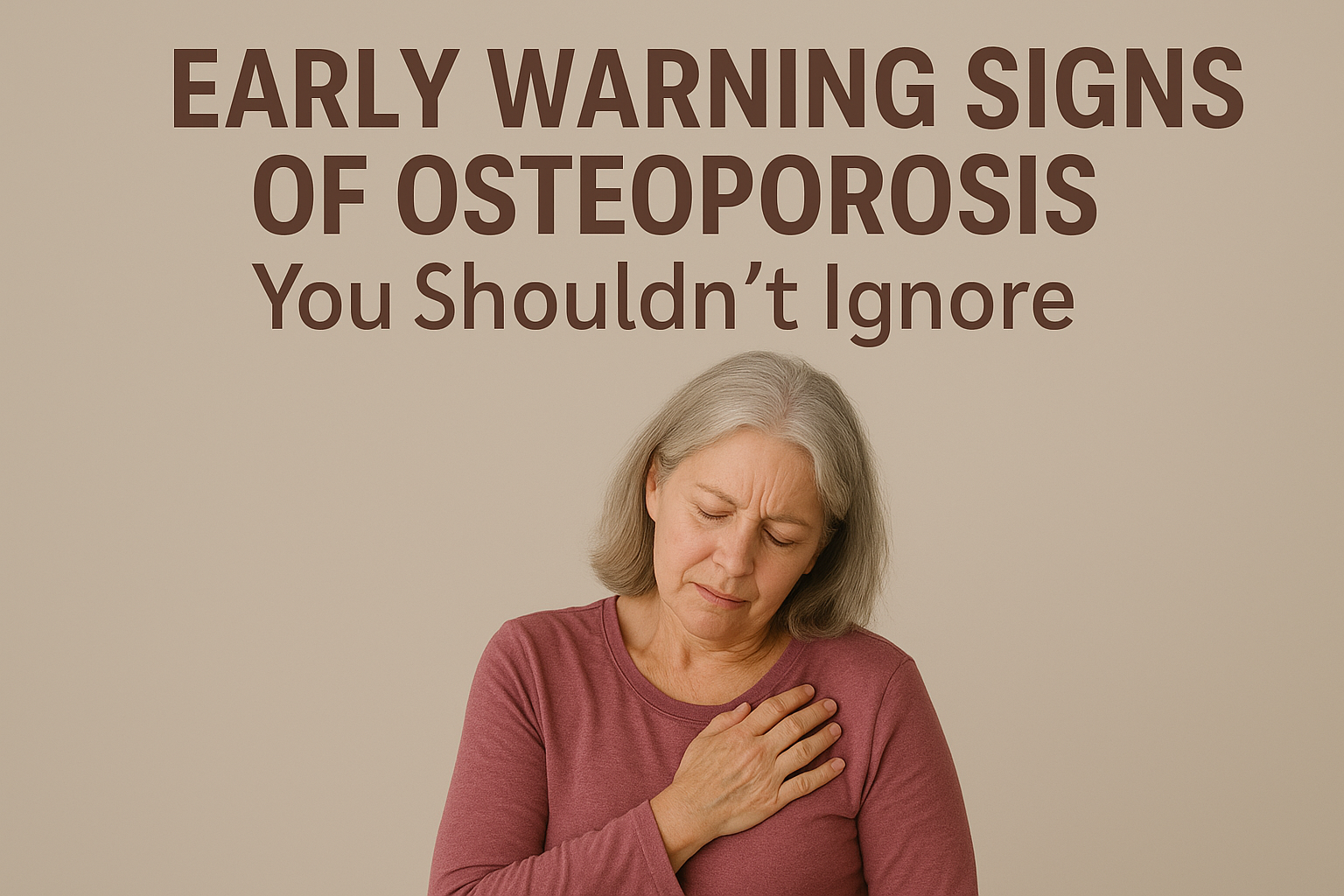Osteoporosis is often called the silent bone disease because it progresses quietly without noticeable symptoms until a fracture occurs. It weakens the bone structure, making even simple activities—like bending or lifting—risky. Recognizing the early warning signs of osteoporosis is crucial for early detection and effective treatment.
Understanding Osteoporosis
Osteoporosis occurs when the bone density decreases, and the bones become porous and fragile. With age, your body’s ability to replace old bone tissue declines, resulting in weak bones that break easily.
This bone health condition is more common among postmenopausal women, but it can affect men too, especially those with low calcium intake, vitamin D deficiency, or sedentary lifestyles.
1. Frequent or Unexplained Bone Fractures
One of the first osteoporosis symptoms is frequent fractures from minimal trauma. You may notice fractures occurring after mild falls or even sudden movements like coughing or bending.
- Most common fracture sites: wrist, hip, and spine
- These fractures often signal low bone mass
- Seek a bone density test if fractures happen frequently
2. Loss of Height and Stooped Posture
If you notice you’re getting shorter or your back is rounding, this may be a sign of spinal bone loss. When the vertebrae weaken, they compress, causing a hunched appearance known as kyphosis.
- Height loss of even 2–3 cm can indicate vertebral compression
- It may lead to difficulty in balance and breathing problems over time
3. Persistent Back or Neck Pain
Constant back pain could point to a vertebral fracture or collapse due to weakened spinal bones. Unlike muscle strain, this pain often persists for weeks or months.
- Pain worsens when standing or walking
- May be accompanied by tenderness along the spine
Ignoring back pain may allow the spinal osteoporosis to worsen and lead to deformity.
4. Weak Grip and Reduced Strength
A weak grip can be a subtle but telling sign of decreased bone strength.
Studies have found that individuals with lower handgrip strength are more likely to experience bone loss and fractures.
- Difficulty opening jars or carrying bags
- Early indicator of overall skeletal weakness
5. Receding Gums and Dental Bone Loss
Your teeth can reflect your bone health too. Receding gums or loose teeth can signal bone loss in the jaw.
- Gum recession exposes tooth roots
- Early dental bone loss can be linked to osteoporosis progression
Visit your dentist regularly—they can detect early jaw bone deterioration.
6. Brittle Nails and Thinning Hair
Brittle nails or thinning hair are often overlooked signs of low calcium levels and poor bone nutrition.
While not a standalone symptom, these changes might accompany hormonal imbalances or vitamin D deficiency, both of which increase osteoporosis risk.
Who Is Most at Risk of Osteoporosis?
Several factors contribute to the development of osteoporosis. You may be at higher risk if you have:
- Family history of fractures
- Menopause before 45 years
- Low physical activity or prolonged bed rest
- Poor calcium and vitamin D intake
- Excess alcohol consumption or smoking
Maintaining an active lifestyle with weight-bearing exercises like walking, jogging, or yoga can improve bone strength and reduce fracture risk.
How Osteoporosis Is Diagnosed
A DEXA scan (Bone Density Test) is the most accurate tool to measure bone mineral density. It helps detect early bone loss before fractures occur.
Doctors may also recommend:
- Blood tests for vitamin D levels
- X-rays to detect spine compression fractures
- Lifestyle evaluation for osteoporosis prevention
Treatment and Prevention Tips
Treatment focuses on improving bone strength, preventing fractures, and slowing bone density loss.
Key preventive measures include:
- Adequate Calcium Intake – Add milk, yogurt, almonds, and leafy greens.
- Vitamin D Supplementation – Helps in calcium absorption.
- Regular Exercise – Focus on resistance and strength training.
- Avoid Smoking and Alcohol – Both weaken bone structure.
- Medical Supervision – Follow a tailored plan recommended by an orthopedic specialist.
Living with Osteoporosis
Early detection can help manage osteoporosis naturally and improve your quality of life. Focus on posture correction, balanced nutrition, and regular health check-ups. Remember, every small lifestyle improvement contributes to stronger bones and a healthier future.
Conclusion
Osteoporosis develops silently, but its early warning signs can save you from future pain and fractures. Never ignore changes like height loss, weak grip, or persistent back pain. Stay proactive about your bone health today.
Consult our Dr. Harish Orthocare for expert diagnosis, personalized care, and advanced osteoporosis treatment.

